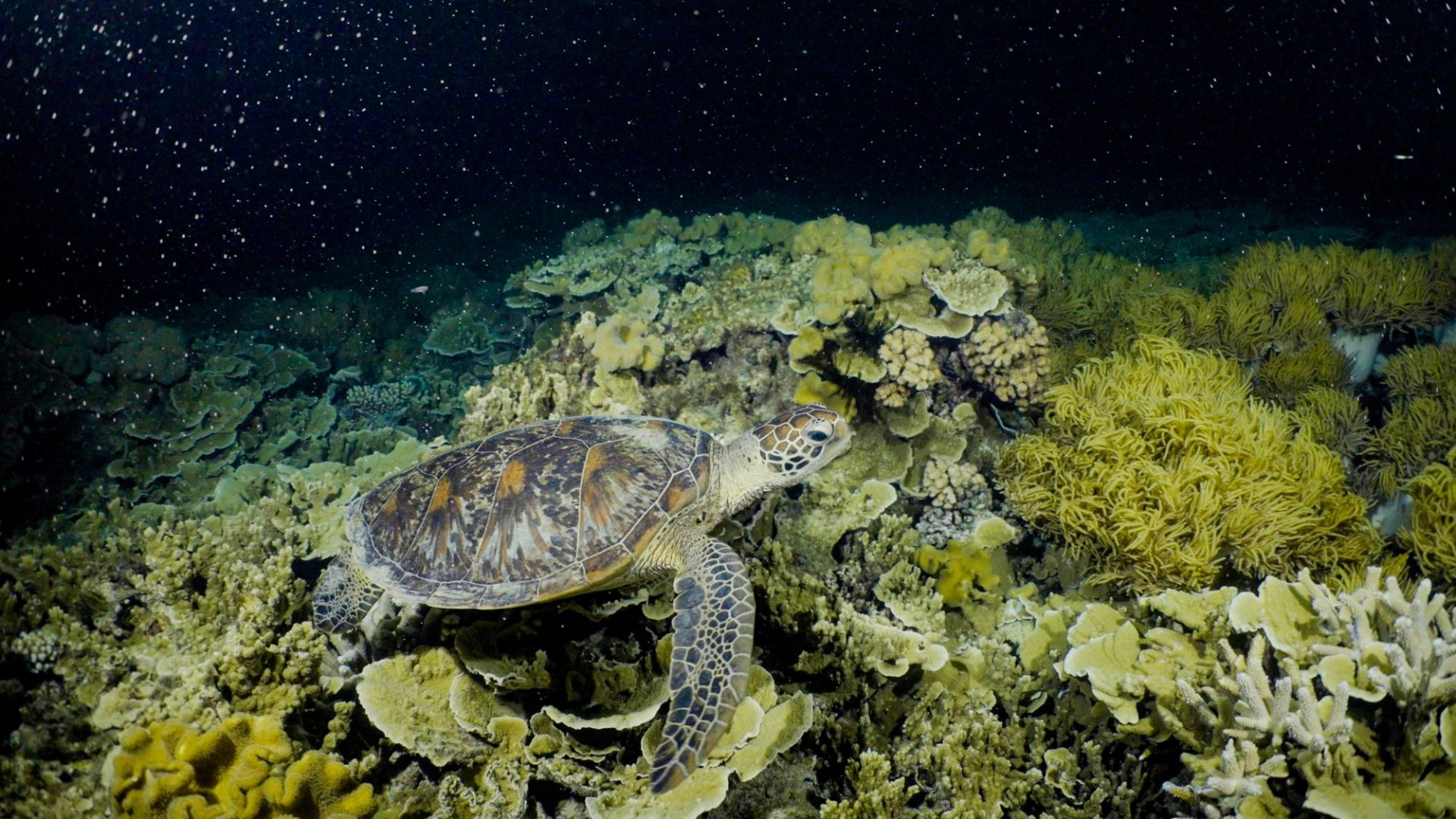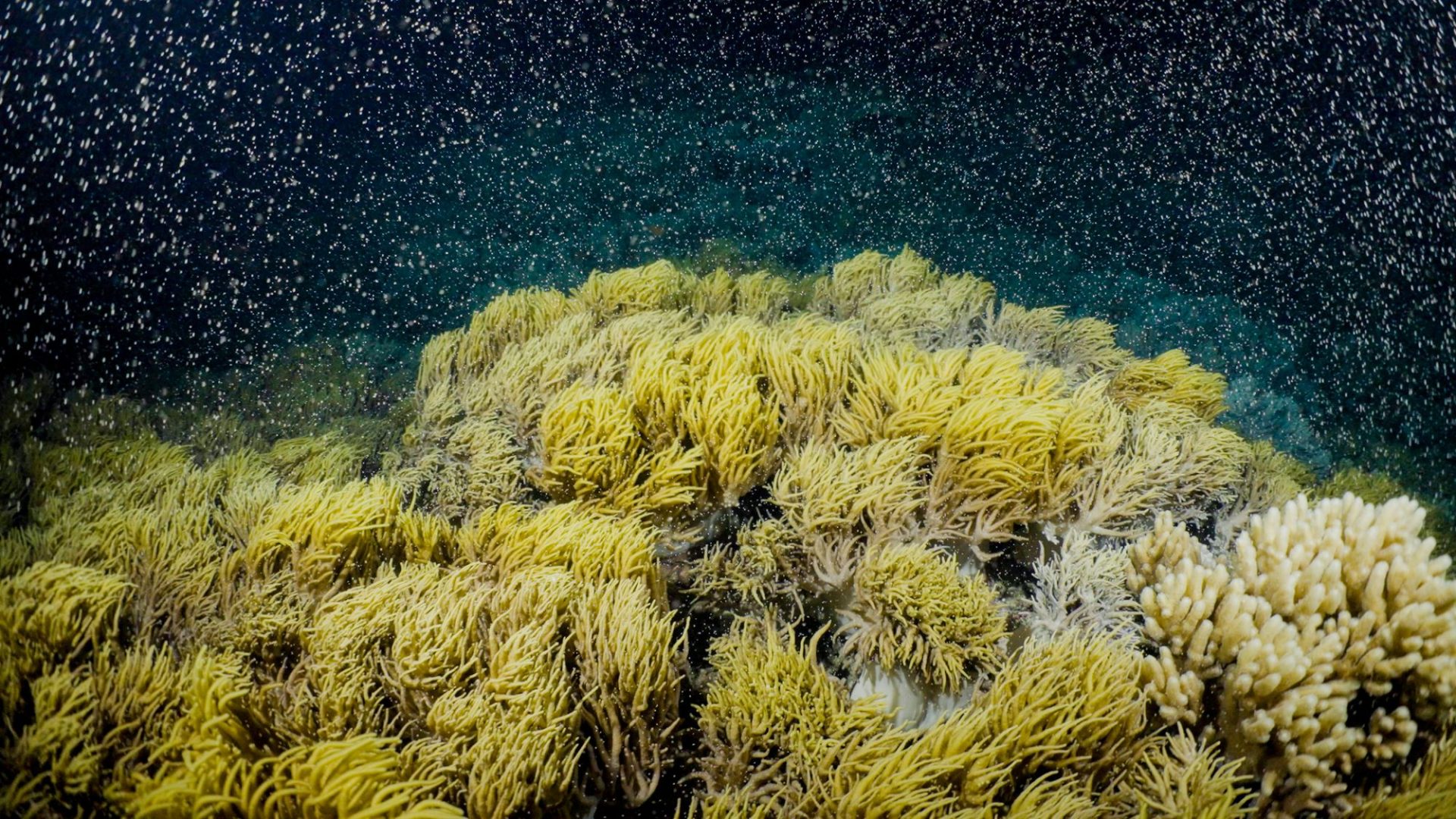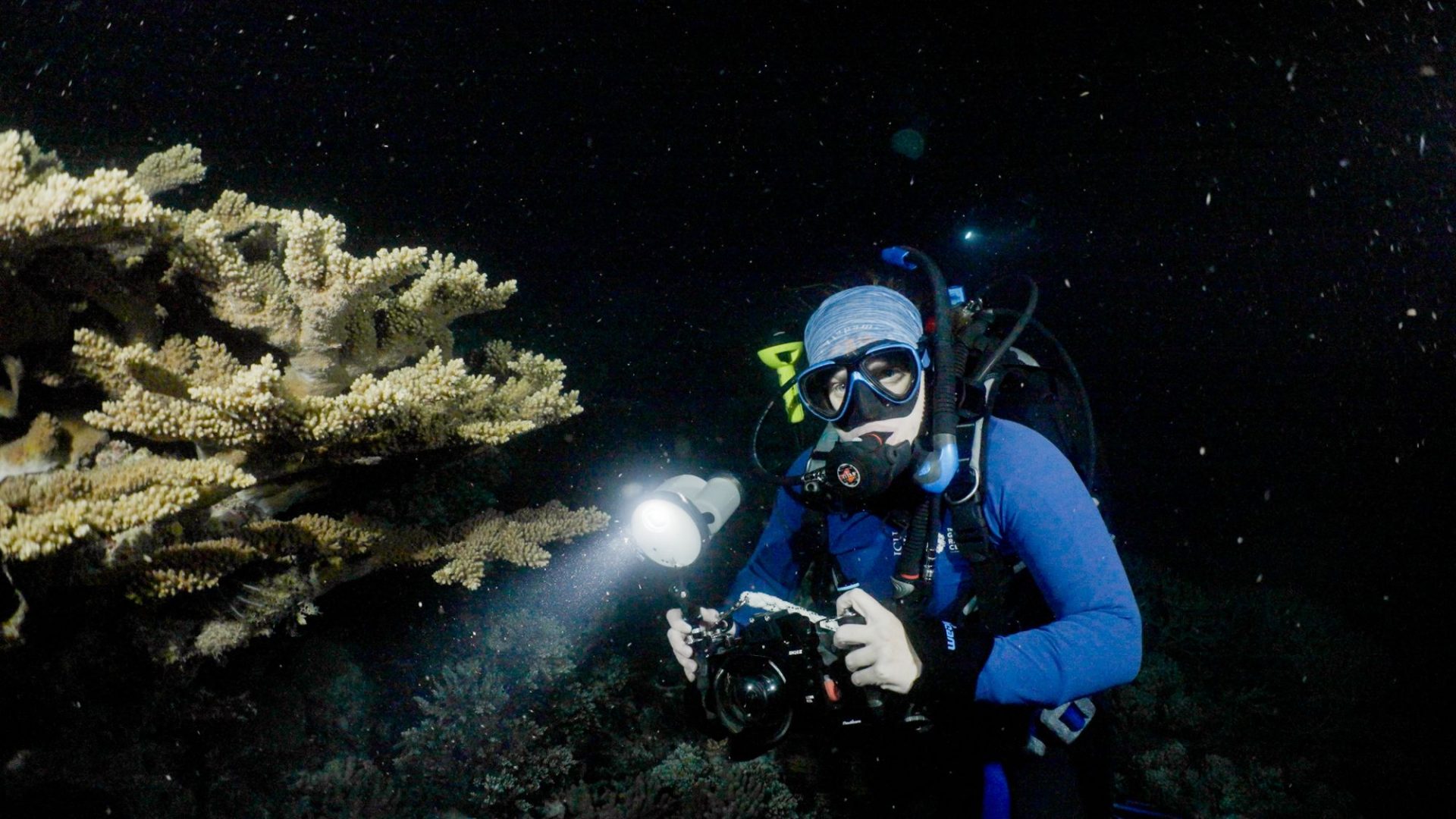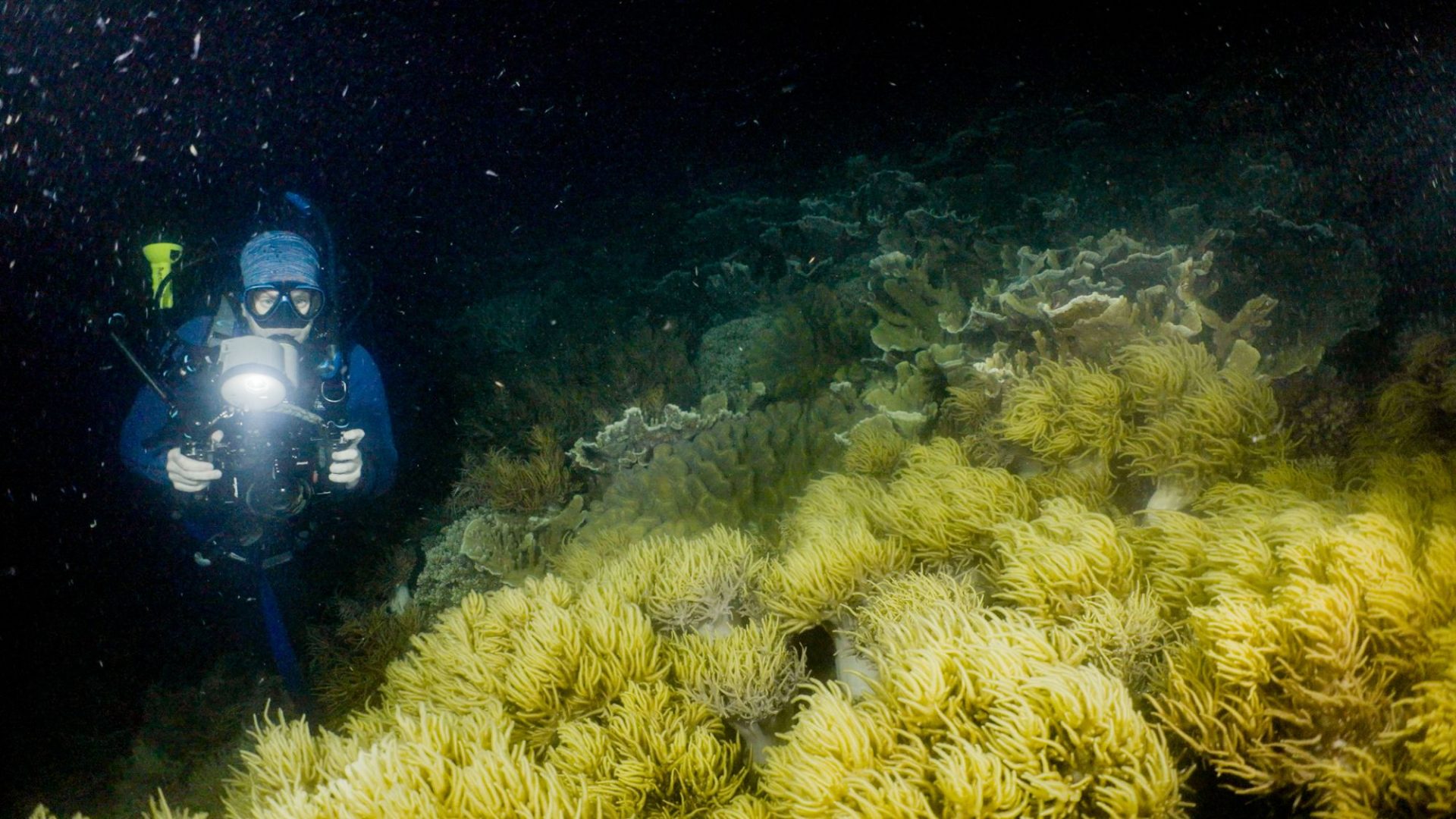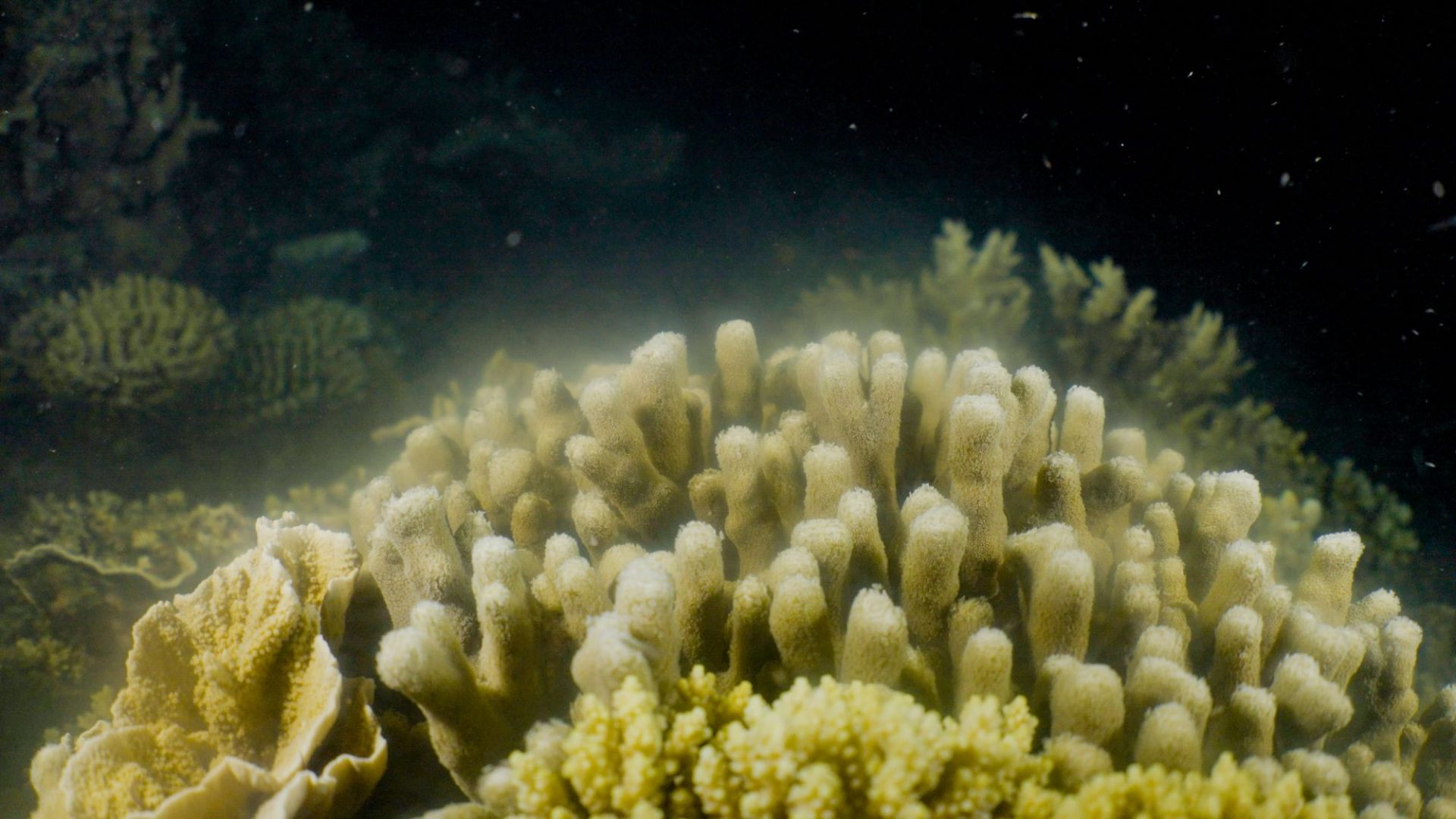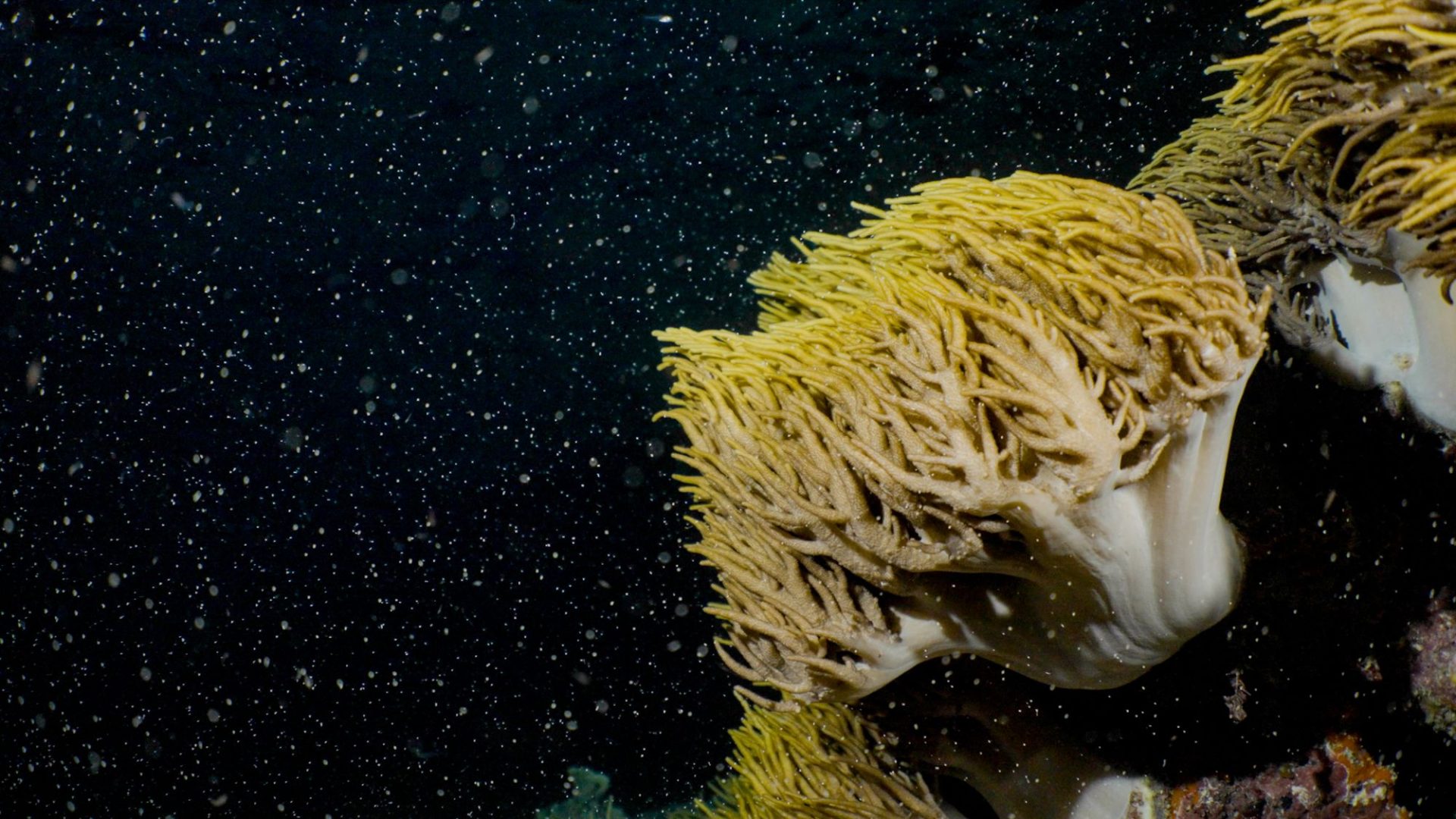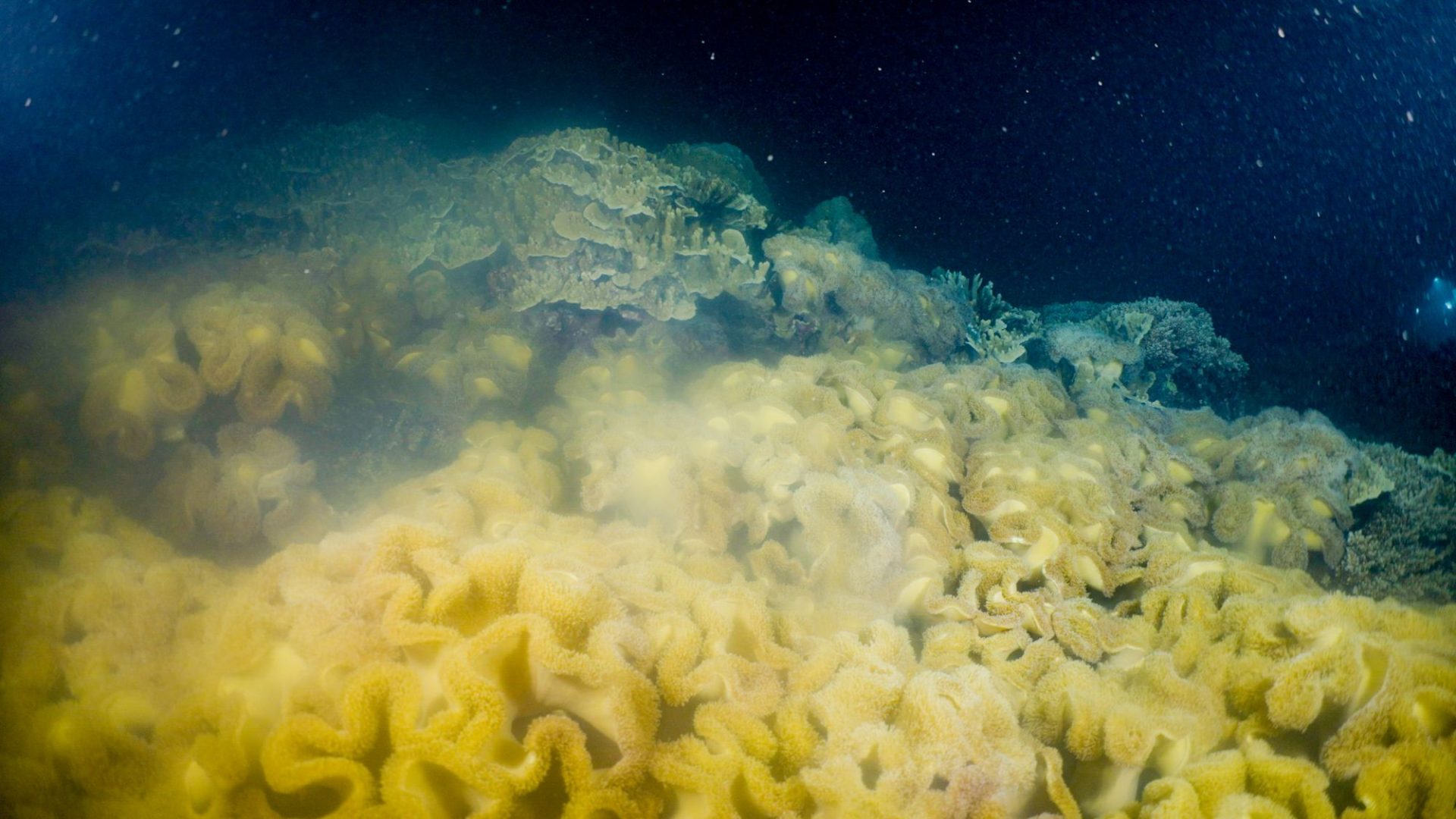Reef encounters
The Great Barrier Reef is teeming with new life as it undergoes its annual spawn.
Photography by Calypso Productions
09 November 2023
Researchers are poised to analyse the next generation of corals on the Great Barrier Reef after the start of the annual coral spawn was recorded last week on Moore Reef, 47 kilometres east of Cairns.
On Thursday 2 November, scientists, tourism operators and traditional owners welcomed the sight of billions of tiny pink balls exploding into the water as different species of soft corals and a handful of hard corals began the regeneration process, spawning for a few hours during the night.
The sex cell bundles break open, releasing sperm and eggs to bump into each other as they float on the Coral Sea currents and then settle on coral rubble to form baby corals.
Marine biologist Stuart Ireland has been filming the annual rebirth of the Great Barrier Reef since 1996, and the 2023 event is the tenth time he has documented it from the Sunlover Reef Cruises pontoon at Moore Reef.
“The coral cover and diversity is very high at Moore Reef after the past six years of strong growth, and the 2023 spawning reflects this,” he says. “As in previous years, we watched the soft corals start the spawning process and spent a few hours observing the bundles of sperm and eggs being released.
“We will dive on Moore Reef again after the sun goes down tonight and expect to see the even more spectacular phenomenon of the hard corals starting the process of regeneration on the Great Barrier Reef.”
Ireland was joined by Cairns-Port Douglas reef hub coordinator Dr Abbi Scott, a researcher at James Cook University’s Centre for Tropical Water and Aquatic Ecosystem Research (TropWater), who is working with tour operators to understand coral recruitment after the spawning event.
Dr Scott says tiles were deployed across five reefs, and the baby corals that grow on them would be analysed next year with the data available for coral larval dispersal models to understand better the connectivity of the reefs where the larvae originated.
“This research will build knowledge of the relative variation in coral recruitment at each reef studied and how it differs for each of those reefs,” says Scott.
“It will be useful to inform assisted coral recovery initiatives and to help operators manage their high-value tourism sites.”
The Cairns-Port Douglas Reef Hub network is a grassroots community approach to reef health supported by traditional owners, scientists, tourism operators and the community.
Funded by the partnership between the Australian Government’s Reef Trust and the Great Barrier Reef Foundation, it brings together individuals and organisations that want to learn, share and collaborate to pilot new approaches for assisted coral reef recovery, protection and adaptation that deliver benefits for the local reefs and community in the face of climate change.
The coral recruitment study is just one of the many innovative coral rehabilitation and stewardship projects underway in the Cairns and Port Douglas region and has the strong support of the tourism industry. Wavelength Reef Cruises owner and marine biologist John Edmondson helped to develop the recruitment research concept.
Dr Scott said Wavelength was one of five tourism operators involved in the project, with tiles placed across five reefs by Down Under Cruise and Dive, Experience Co, Passions of Paradise, Quicksilver Group, Wavelength and not-for-profit organisation Reef Restoration Foundation, which manages underwater coral nurseries at Moore Reef.
“Such a regional scale study across a tourism operator network provides invaluable data for the Cairns-Port Douglas region and is a potential model for other tourism hotspots as tourism and research become more entwined,” she says.
“The tiles will be retrieved in February and analysed in the TropWater laboratory by the Hub network of tourism operators, non-government organisations and traditional owners.”
Great Barrier Reef Foundation managing director Anna Marsden adds: “Right now, the Great Barrier Reef is teeming with new life.
“The annual coral spawning is not only one of the most extraordinary natural phenomena on the planet, it also provides us with an opportunity to fast-track world-leading research to safeguard its future from the impacts of climate change,” she says.
This project is run by the Cairns-Port Douglas Reef Hub and led by local partners Down Under Cruise and Dive, Experience Co, Passions of Paradise, Quicksilver, Reef Restoration Foundation and Wavelength.
The Cairns-Port Douglas Reef Hub is funded by the partnership between the Australian Government’s Reef Trust and the Great Barrier Reef Foundation and is coordinated by TropWater at James Cook University.




